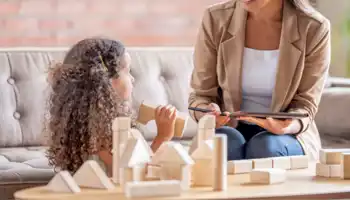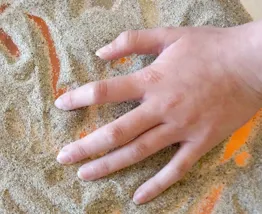Creating a Neurodiversity-Affirming Playroom: How Therapists Can Foster Inclusive, Empowering Spaces for Kids

When you work with children, the therapy room itself becomes a co-therapist. Every object, color, sound, and message it sends contributes to the safety (or stress) your clients’ experiences. For neurodivergent children, this environment can either reinforce societal messages of exclusion or offer a radically affirming space where they are valued exactly as they are.
A neurodiversity-affirming playroom isn’t just about the toys you choose. It’s rooted in a deep shift in how we view neurodivergence: not as a problem to be fixed, but as a natural and valuable variation of human experience.
Shifting from “Fixing” to “Affirming”
At the core of neurodiversity-affirming care is a simple but powerful truth: there is no one “normal” way to be human. This perspective, which originated in the late 1990s with autistic sociologist Judy Singer, reframes neurodevelopmental differences such as autism, ADHD, sensory processing differences, and learning disorders as natural brain variations, not deficits.
For therapists, this means moving away from treatment goals aimed at normalizing behavior. Instead, the therapeutic relationship becomes a space to celebrate strengths, support regulation, and build trust without asking the child to mask or conform to neurotypical standards.
This starts with self-reflection. Many of us, even with the best intentions, have internalized ableist ideas. We might use deficit-based language without realizing it, or structure sessions in ways that unintentionally send the message that “typical” is the goal. Becoming neurodiversity-affirming requires an ongoing commitment to examine our biases, listen to neurodivergent voices, and shift the focus from fixing behavior to understanding and honoring it.
Designing an Affirming Playroom
Creating a neurodiversity-affirming play space involves more than offering sensory toys or fidgets. It’s about designing for regulation, flexibility, and identity.
Consider lighting and acoustics. Natural lighting or soft, adjustable lighting often works better than harsh fluorescents. The space should include options for children to regulate their sensory input, like weighted items, headphones, soft textures, or movement tools such as swings or rocking chairs.
Flexibility is key. Some children may need to move, vocalize, stim, or take breaks—none of which should be discouraged. The room should invite a child to be themselves without fear of correction or control. Rather than rigidly following a therapist-led structure, allow for child-led play and give space for their interests and stims to guide the session.
Representation also matters. Books, art, and toys should reflect diverse abilities and neurotypes. Seeing themselves reflected in the playroom helps neurodivergent children feel seen and valued. Bibliotherapy can be a powerful tool here. Books like Some Brains by Nelly Thomas or Be Who You Are by Todd Parr affirm difference and promote self-acceptance in a gentle, engaging way.
Building an Inclusive Office Environment
Affirming care doesn’t begin at the therapy door. It starts the moment a family finds your website or walks through your front door.
From intake paperwork to your office atmosphere, ensure that neurodivergent clients and their families feel welcomed and understood. Use inclusive language and offer space for clients to express preferences in how they communicate. Intake forms can include child-centered questions or offer multiple ways to respond: verbally, through visuals, or in writing.
Train your front desk staff in neuroaffirming practices as well. A child’s experience with your team can deeply shape their sense of psychological safety. The entire environment—from scheduling to communication—should reflect patience, flexibility, and respect.
Avoid assuming that all clients benefit from traditional structures. Some may need longer transitions, quieter spaces, or options to choose how they engage in therapy. Choice fosters autonomy. And autonomy builds trust.
Therapeutic Interventions That Celebrate Strengths
Neurodiversity-affirming interventions highlight a child’s abilities, not just their challenges. Activities like “Lego Strengths” encourage children to build something that reflects a skill or trait they’re proud of. “Show and Tell” lets them bring something meaningful to share, helping to build connection on their terms.
You might introduce “My Olympics,” where children engage in fun activities that showcase their strengths—whether it’s memory, creativity, or movement. The goal isn’t competition, but celebration.
Non-directive play is especially powerful. Simply being present, attuned, and open to connection allows children to express themselves authentically without pressure. When we stop trying to correct or redirect, we make room for discovery and trust.
Creating a neurodiversity-affirming playroom is not a one-time project. It’s an evolving practice of listening, learning, and reimagining what therapeutic success looks like. It asks us to move beyond compliance goals and instead foster environments where difference is not just tolerated, but celebrated.
By transforming our spaces and our approach, we can offer neurodivergent children something many have rarely experienced: a space that feels like it was made with them in mind.

Learn strengths-based interventions for autism, including masking, attachment issues, and emotional dysregulation. Join leading voices in the field in this premier online certification course.





